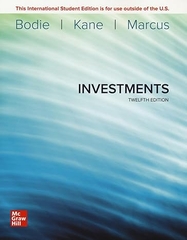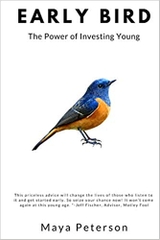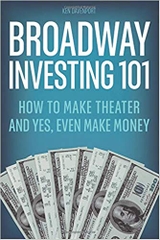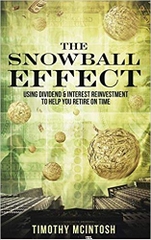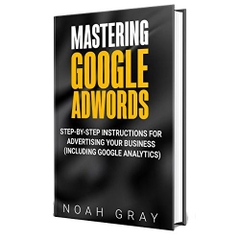-
-
-
Tổng tiền thanh toán:
-
-
Thông tin
-
Tìm sách theo yêu cầu
The essential stock market guide, now updated with even more timely and necessary information
Now in its fifth edition, The Neatest Little Guide to Stock Market Investing has established itself as a clear, concise, and highly effective approach to stocks and investment strategy. Rooted in the principles that made it invaluable from the start, this completely revised and updated edition of The Neatest Little Guide to Stock Market Investing shares a wealth of information, including:
• What has changed and what remains timeless as the economy recovers from the subprime crash
• All-new insights from deep historical research showing which measurements best identify winning stocks
• A rock-solid value averaging plan that grows 3 percent per quarter, regardless of the economic climate
• An exclusive conversation with legendary Legg Mason portfolio manager Bill Miller, revealing what he learned from the crash and recovery
• Thoroughly updated resources emphasizing online tools, the latest stock screeners, and analytical sites that best navigated recent trends
Accessible and intelligent, The Neatest Little Guide to Stock Market Investing is what every investor needs to keep pace in the current market.
- Link: http://www.amazon.com/Neatest-Little-Guide-Market-Investing/dp/0452298628
Now in its fifth edition, The Neatest Little Guide to Stock Market Investing has established itself as a clear, concise, and highly effective approach to stocks and investment strategy. Rooted in the principles that made it invaluable from the start, this completely revised and updated edition of The Neatest Little Guide to Stock Market Investing shares a wealth of information, including:
• What has changed and what remains timeless as the economy recovers from the subprime crash
• All-new insights from deep historical research showing which measurements best identify winning stocks
• A rock-solid value averaging plan that grows 3 percent per quarter, regardless of the economic climate
• An exclusive conversation with legendary Legg Mason portfolio manager Bill Miller, revealing what he learned from the crash and recovery
• Thoroughly updated resources emphasizing online tools, the latest stock screeners, and analytical sites that best navigated recent trends
Accessible and intelligent, The Neatest Little Guide to Stock Market Investing is what every investor needs to keep pace in the current market.
Product Details
- Series: Neatest Little Guide to Stock Market Investing
- Paperback: 336 pages
- Publisher: Plume; 4 Revised edition (December 24, 2012)
- Language: English
- ISBN-10: 0452298628
- ISBN-13: 978-0452298620
- Product Dimensions: 8 x 5.4 x 0.7 inches
- Shipping Weight: 8.8 ounces (View shipping rates and policies)
- Average Customer Review: 4.7 out of 5 stars See all reviews (106 customer reviews)
- Amazon Best Sellers Rank: #2,462 in Books (See Top 100 in Books)
- #3 in Books > Business & Money > Investing > Stocks
- #10 in Books > Business & Money > Investing > Introduction
Editorial Reviews
Review
"Jason Kelly captured my investment methods well, and better than most who have tried to describe what I do."
(Bill Miller, Former Chairman & Chief Investment Officer, Legg Mason Capital)Most Helpful Customer Reviews
99 of 105 people found the following review helpfulBy Scott W. McMurray II on January 22, 2013
Format: Paperback
This is a great first book for the diligent investor. By diligent, I mean a person that actually wants to do the footwork involved with learning how to invest on his or her own and wants to be able to speak the language of the stock market. For the person who is not willing, or simply not interested, in putting in all the work involved in learning how to invest, there are other options out there that may be better, such as financial advisors (if you want the hand-holding and/or don't mind spending more on commissions for the advice) and ETFs (exchange traded funds, which if picked right simply move in tandem with the market). However, even the passive investor could learn a lot from reading or even just skimming through this book.
Kelly begins at square 1 by describing what the stock market even is, and how it functions. He discusses very basic things, such as the difference between a full-service and a self-service broker, and the way that stocks get listed on the exchanges in the first place. His tone and style are welcomed, as he neither presumes that you know anything prior to reading, nor is he paternalistic or presuming that you are incompetent.
Unique to many books, Kelly sums up the philosophy of some of the tried and true "master" investors. His list includes Ben Graham, Phil Fisher, Warren Buffett, Peter Lynch, Will O'Neill, and Bill Miller. By examining multiple investors in the way he does, Kelly truly shows that there is more than one way to successfully invest in the stock market. Graham is the model value investor, focusing on stocks that are undervalued. Phil Fisher is a growth investor, focusing on superior companies that he expects will keep growing. Warren Buffett is a combination of Graham and Fisher, and focuses on buying high-quality companies, among other things. Peter Lynch categorizes companies into different types of stocks and emphasizes fundamental analysis by really checking out the company. Will O'Neill is the epitome of a growth investor and focuses on momentum with his CANSLIM method. And lastly, Bill Miller is a value investor that focuses on contrarian positions, among other things. Kelly's tidbits of interview with Bill Miller are a welcome addition to this edition of the book, mostly because it is difficult to find very much material with Bill Miller's thoughts (the other 5 "masters" have all written their own books). It was a mild disappointment to me that Seth Klarman was not included in the "masters" list, with his focus on absolute return rather than relative return. But all things considered, Kelly presents a fairly comprehensive list of 6 as a base, shows the areas where they agree, and ultimately encourages the reader to learn in their own way from this.
Perhaps most importantly, Kelly goes through the basics of fundamental analysis, which is the way that most of the masters go about analyzing stocks. These included things such as Price to Earnings ratio, Price to Book ratio, Price to Sales ratio, Market Cap, Dividends, Current Ratio, and a few others. He walks the reader through the basics of the income statement, the balance sheet, and the cash flow statement. In going through them, he rightly points out that different people place different emphasis on them and the way that they determine whether to buy a stock. He also points out that fundamental analysis is the way that investors (rather than day traders) evaluate stocks. Kelly also takes note of technical analysis (what day traders typically use), and points out that some people believe the market can be timed with prediction charts, while also not making any conclusion as to whether he thinks that is possible or not.
Kelly gives the reader advice for how to conduct his or her own research when contemplating what stock to buy. This includes gathering information from various websites (such as Yahoo! Finance, Google Finance, fund newsletters, etc.), publications (WSJ, Barron's, IBD, etc.), ratings companies (ValueLine, Morningstar, the S&P, etc.) and the companies themselves. Further, he goes through the steps that the reader should consider regarding when to think about selling the stock, which includes both good reasons and purely emotional ones. Kelly employs a method called the "Fearsome Foursome," which I personally use to this day. It more or less forces the reader to know why they bought, what motivated them to hold or sell, and to look back over time and learn from it.
Last, Kelly discusses how the reader should structure his or her own portfolio of stocks. He lays out a method of averaging in both small and mid-cap stocks, which is helpful for readers who want a good starting point. But ultimately, he encourages the reader to learn to do his or her own due diligence.
This book is not radically different from previous editions. So if you already have the 2010 edition, I'm not sure it'd be worth buying this one too unless you are just an overall fan, want a refresher, or want the tidbit of interview with Bill Miller. It is helpful to anyone that wants to learn more about the stock market as a beginning investor. And it is helpful to the intermediate/advanced investor that would like to just brush up on the basics of analyzing stocks and remembering the way that stocks work. But the book is clearly geared towards the person that actually wants to learn about the stock market and how to analyze and value various stocks on their own accord (rather than be told what to buy). Keeping that in mind, I believe it achieves its purpose. Thus, I give it 5 stars.
Kelly begins at square 1 by describing what the stock market even is, and how it functions. He discusses very basic things, such as the difference between a full-service and a self-service broker, and the way that stocks get listed on the exchanges in the first place. His tone and style are welcomed, as he neither presumes that you know anything prior to reading, nor is he paternalistic or presuming that you are incompetent.
Unique to many books, Kelly sums up the philosophy of some of the tried and true "master" investors. His list includes Ben Graham, Phil Fisher, Warren Buffett, Peter Lynch, Will O'Neill, and Bill Miller. By examining multiple investors in the way he does, Kelly truly shows that there is more than one way to successfully invest in the stock market. Graham is the model value investor, focusing on stocks that are undervalued. Phil Fisher is a growth investor, focusing on superior companies that he expects will keep growing. Warren Buffett is a combination of Graham and Fisher, and focuses on buying high-quality companies, among other things. Peter Lynch categorizes companies into different types of stocks and emphasizes fundamental analysis by really checking out the company. Will O'Neill is the epitome of a growth investor and focuses on momentum with his CANSLIM method. And lastly, Bill Miller is a value investor that focuses on contrarian positions, among other things. Kelly's tidbits of interview with Bill Miller are a welcome addition to this edition of the book, mostly because it is difficult to find very much material with Bill Miller's thoughts (the other 5 "masters" have all written their own books). It was a mild disappointment to me that Seth Klarman was not included in the "masters" list, with his focus on absolute return rather than relative return. But all things considered, Kelly presents a fairly comprehensive list of 6 as a base, shows the areas where they agree, and ultimately encourages the reader to learn in their own way from this.
Perhaps most importantly, Kelly goes through the basics of fundamental analysis, which is the way that most of the masters go about analyzing stocks. These included things such as Price to Earnings ratio, Price to Book ratio, Price to Sales ratio, Market Cap, Dividends, Current Ratio, and a few others. He walks the reader through the basics of the income statement, the balance sheet, and the cash flow statement. In going through them, he rightly points out that different people place different emphasis on them and the way that they determine whether to buy a stock. He also points out that fundamental analysis is the way that investors (rather than day traders) evaluate stocks. Kelly also takes note of technical analysis (what day traders typically use), and points out that some people believe the market can be timed with prediction charts, while also not making any conclusion as to whether he thinks that is possible or not.
Kelly gives the reader advice for how to conduct his or her own research when contemplating what stock to buy. This includes gathering information from various websites (such as Yahoo! Finance, Google Finance, fund newsletters, etc.), publications (WSJ, Barron's, IBD, etc.), ratings companies (ValueLine, Morningstar, the S&P, etc.) and the companies themselves. Further, he goes through the steps that the reader should consider regarding when to think about selling the stock, which includes both good reasons and purely emotional ones. Kelly employs a method called the "Fearsome Foursome," which I personally use to this day. It more or less forces the reader to know why they bought, what motivated them to hold or sell, and to look back over time and learn from it.
Last, Kelly discusses how the reader should structure his or her own portfolio of stocks. He lays out a method of averaging in both small and mid-cap stocks, which is helpful for readers who want a good starting point. But ultimately, he encourages the reader to learn to do his or her own due diligence.
This book is not radically different from previous editions. So if you already have the 2010 edition, I'm not sure it'd be worth buying this one too unless you are just an overall fan, want a refresher, or want the tidbit of interview with Bill Miller. It is helpful to anyone that wants to learn more about the stock market as a beginning investor. And it is helpful to the intermediate/advanced investor that would like to just brush up on the basics of analyzing stocks and remembering the way that stocks work. But the book is clearly geared towards the person that actually wants to learn about the stock market and how to analyze and value various stocks on their own accord (rather than be told what to buy). Keeping that in mind, I believe it achieves its purpose. Thus, I give it 5 stars.
XEM THÊM TẠI AMAZON.COM
- Thông tin chi tiết
- Mục lục
- Đọc thử
- Đọc thử
- Đánh giá & bình luận của người mua
- Những cuốn sách cùng chủ đề hoặc có liên quan
Tại web chỉ có một phần nhỏ các đầu sách đang có nên nếu cần tìm sách gì các bạn có thể liên hệ trực tiếp với Thư viện qua Mail, Zalo, Fanpage nhé
Đăng ký nhận tin qua email
Hãy đăng ký ngay hôm nay để nhận được những tin tức cập nhật mới nhất về sản phẩm và các chương trình giảm giá, khuyến mại của chúng tôi.

